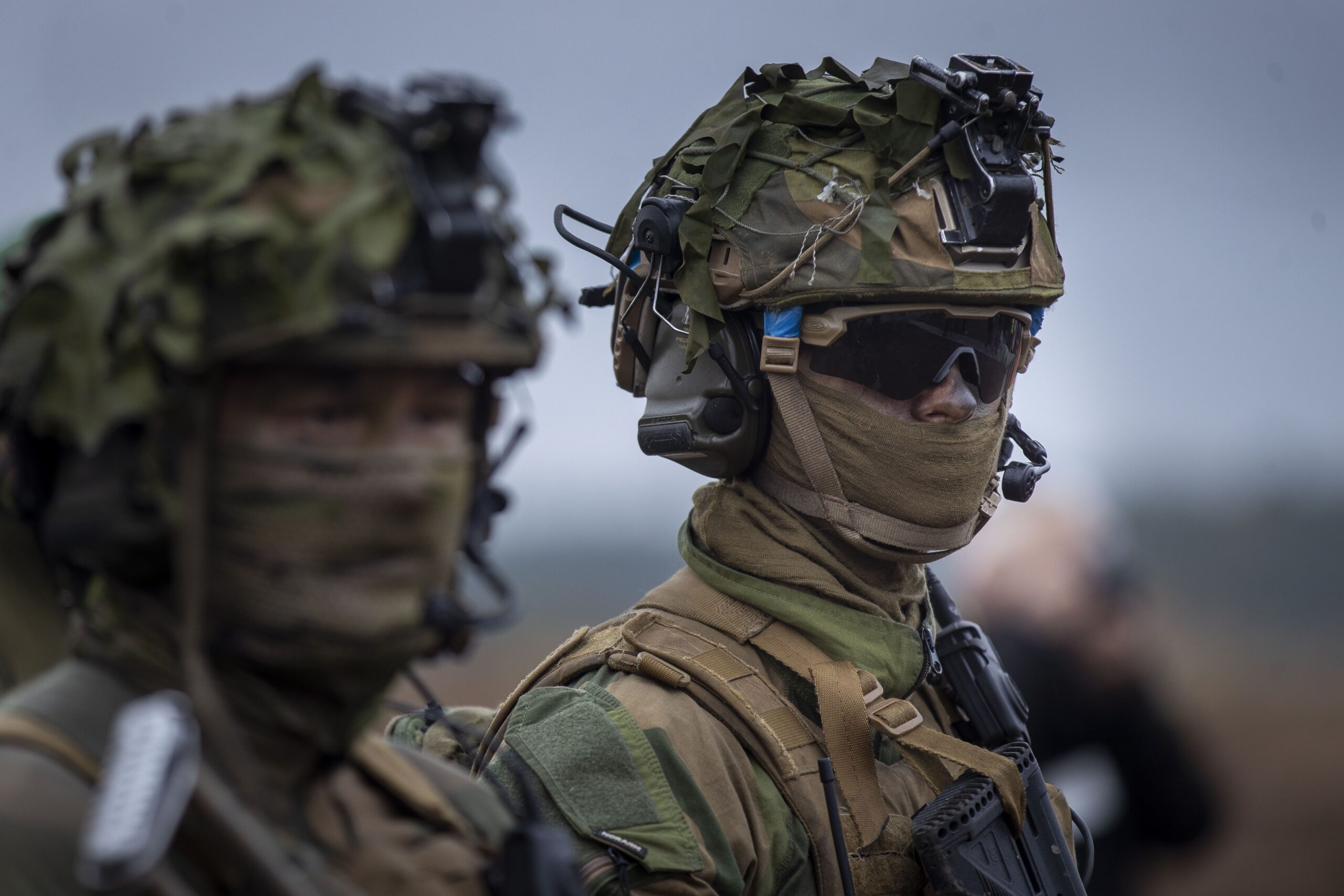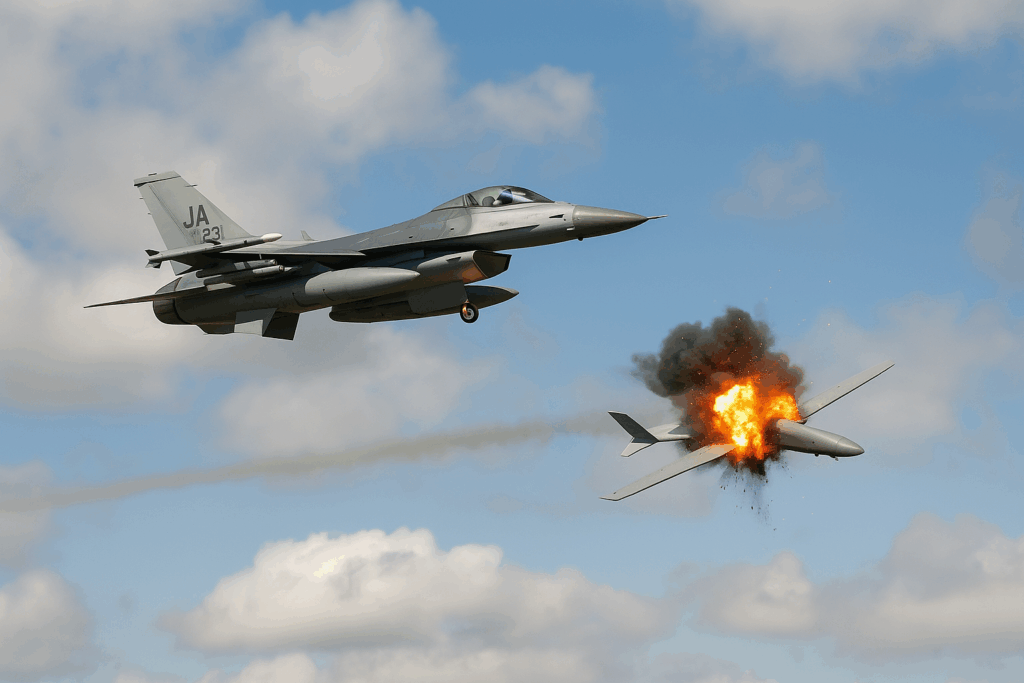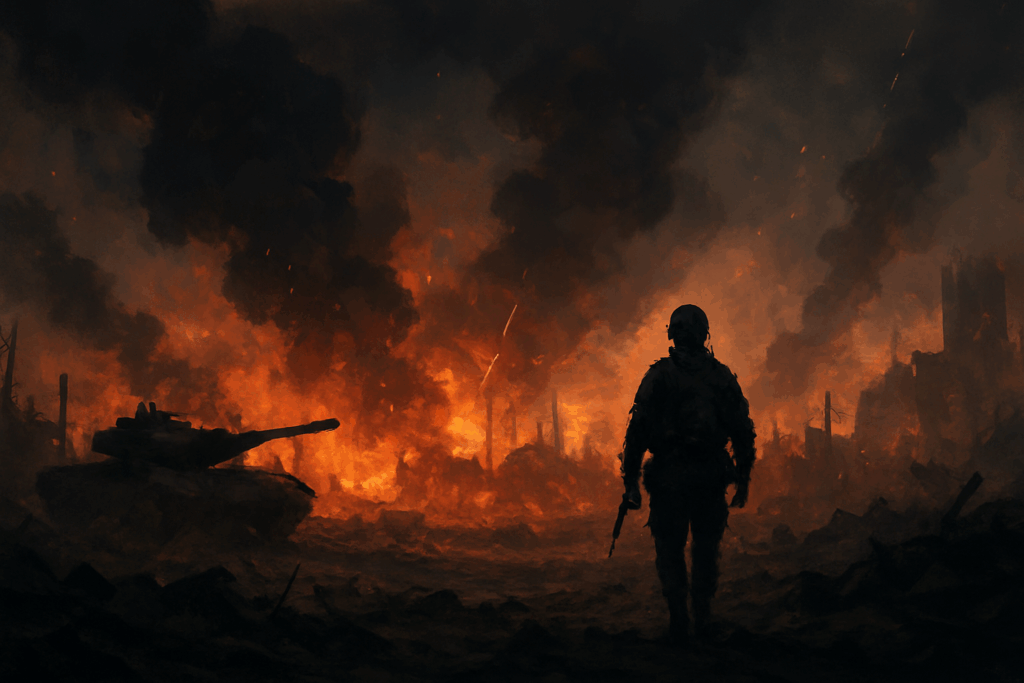Between restraint and Article 5: Scenarios for NATO’s response to Russia’s invasion
29 September 18:54 ANALYSIS FROM
ANALYSIS FROM In recent weeks, Europe has faced a new wave of aerial incidents – Russian drones over Poland, complaints of unidentified aircraft in Denmark, interceptions of identified aircraft on its eastern flank. NATO is stepping up patrols, but the question remains: how to respond to “gray-area” attacks when Moscow combines intelligence, strikes, and information campaigns?
Scenario 1: How NATO should act
According to NATO’s official documents, Article 5 of the Washington Treaty is the basis of the Alliance’s collective defense. It states.
An attack on one or more of the States Parties to this Treaty shall be regarded as an attack on all States Parties – Article 5 of the Washington Treaty
This principle was applied after Russia’s full-scale invasion of Ukraine on February 24, 2022. NATO stepped up its defense plans, increased its troop presence on the Alliance’s eastern flank, and provided Ukraine with significant support, including the supply of weapons and military equipment.
In response to Russia’s aggression, NATO also decided to strengthen its defense posture, including by deploying additional forces and capabilities to countries bordering Russia.

Scenario 2: A restrained response
The current position of the West looks too soft. Military expert Ivan Stupak in a commentary
Alexander Stubb’s statement that we should not overreact to Russian fighters is the weakest possible position. It seems that Europeans have not learned any lessons from the events of recent months, – Ivan Stupak
Stupak suggests that the decision to react with restraint may be made not only in Finland, but also at the level of Brussels or even Washington. The main logic is to avoid escalation and provocations.
We have heard this argument for years: do not shoot down, so as not to escalate. But weakness provokes aggression,” emphasizes Ivan Stupak.
The expert gave an illustrative analogy.
In the cartoon, Leopold the Cat constantly called for peaceful living, but this only provoked the mice to do more mischief. Now Russia is behaving in the same way – the more it is called for peace, the more brazenly it acts,” Stupak said
Scenario 3: NATO is not ready
Denys Yaroslavskyi, commander of the Ukrainian Armed Forces intelligence unit, analyzed in detail NATO’s readiness to respond to Russia’s actions and calls on the alliance to revise its drone identification and rapid response procedures.
Russia has developed the illusion of deception through its propaganda. Starting with Crimea, the “little green men”. Therefore, even if they carry out some kind of attack, believe me, all their publics will write that it was the Ukrainians who reprogrammed something, sent it somewhere, shot it down with REBs,” Denys Yaroslavsky
According to Yaroslavsky, the incidents with Polish airspace and the closure of airspace in Denmark show a trend.
This will continue to happen. Let me remind you that the drones we saw in western Ukraine came from Hungary. That is, Hungary does not control these drones, they fly in to record video and fix the target. After that, Russian attacks will take place, – Yaroslavsky

Today, this is a very serious problem that Europe is not ready for. Neither to shoot down incoming drones, nor to counteract drones that can now be launched remotely from anywhere in the world.
What could be NATO’s response?
According to military expert Ivan Stupak, the best option would be to make a clear collective decision:
- any unidentified air target that does not respond to requests,
- does not respond to radio calls,
- and after verification is not civilian,
should be immediately destroyed – without long explanations.
The details can be dealt with after the fact. This would be more correct and decisive,” emphasizes Stupak.
However, Stupak warns that even if such a decision is made, Russia will not stop.
“The Russians will be even more brazen and will continue to test NATO by flying longer and deeper into EU territory. But if the West demonstrates strength, not weakness, it will be much more difficult for the aggressor to act with impunity,” summarizes Ivan Stupak.
When will Russia’s war against NATO begin: predictions and reality
Over the past year, more and more politicians and intelligence services have been warning directly: The Kremlin is preparing for a potential war against NATO. Forecasts vary from the next few years to the end of the decade, but the trend is clear: Europe has little time to prepare.
Ukrainian President Volodymyr Zelenskyy said at the Munich Security Conference in February 2025:
“According to our information, Russia may be preparing a war against NATO countries as early as next year. I cannot be 100% sure of this, but we see their military plans, – Volodymyr Zelenskyy
In March 2024, the German media leaked a secret analysis from the Federal Intelligence Service (BND). It says it plainly: Russia could attack NATO countries from 2026 onwards. In October 2024, Bruno Kahl, the head of the BND, confirmed this in parliament:
Russia will be able to attack a NATO country by the end of this decade. Direct military conflict with NATO is becoming a real option for Moscow, – Bruno Kahl
The Danish Defense Intelligence Service (DDIS) made its own forecast in February 2025:
Russia will be able to launch a full-scale war against NATO in Europe within five years, – Danish intelligence
The forecasts differ in details but coincide in the main point: The Kremlin is considering a war with NATO, and it is a matter of time. Some say the date is as early as 2026, while others say 5-8 years.
Actual air attacks against NATO countries today do not look like a distant prospect, but rather a gradual “testing” of the Alliance’s resolve. Both the speed and depth of escalation depend on whether NATO adopts clear rules for the immediate destruction of unknown air targets or continues to choose a cautious response.
Intelligence forecasts coincide in the main: Russia is preparing for a direct confrontation, and the time for Europe is measured not in decades but in years. Some say 2026, others say a five-year horizon. But it is clear that postponing the decision means allowing the Kremlin to dictate the rules of the game. Europe has to make a choice between restraint and determination – and make it quickly.
Читайте нас у Telegram: головні новини коротко









